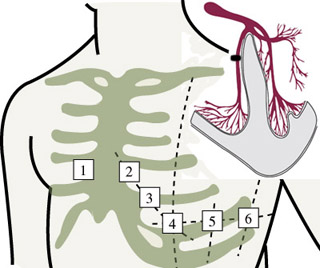Course Description
This course elaborates on the application of the principles of energy and mass flow to major human organ systems. It discusses mechanisms of regulation and homeostasis. It also discusses anatomical, physiological, and pathophysiological features of the cardiovascular, respiratory, and renal systems. There is emphasis …
This course elaborates on the application of the principles of energy and mass flow to major human organ systems. It discusses mechanisms of regulation and homeostasis. It also discusses anatomical, physiological, and pathophysiological features of the cardiovascular, respiratory, and renal systems. There is emphasis on those systems, features, and devices that are most illuminated by the methods of physical sciences.
Course Info
Instructors
Learning Resource Types
grading
Exams with Solutions
assignment_turned_in
Problem Sets with Solutions

Electrocardiography provides visibility into the heart’s electrical activity, helping doctors diagnose a wide range of cardiac abnormalities. For example, a blockage in the right bundle branch of the intraventricular conduction system (inset) produces a particular set of characteristic ECG signals. (Figure by MIT OCW.)










